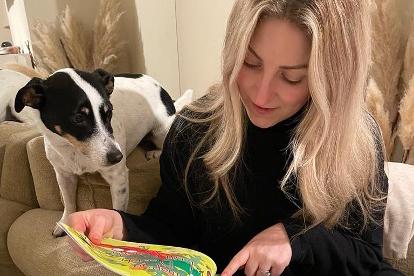
Using storybooks to share research with a wider audience

A research-informed storybook approach is a novel way for researchers to get their work into the public domain – and impact the day-to-day lives of those who can put their findings to real-world use. In this case, these people may include children, young people, parents and teachers. A picture book can amalgamate expertise and experience from sources as diverse as researchers, organisations, charities and other stakeholders.
This method allows researchers to distil academic information and theory into an accessible and directly applicable format. It can also address a common gap between recommendations for primary-care providers based on research and the lack of clear guidance or resources for how to implement them.
We have written a series of research-informed children’s books on issues such as the importance of nature, healthy eating/eating disorders and maths anxiety. We aimed to bring knowledge and information to children as well as to their teachers and parents or carers.
- Using the art of storytelling to help students build resilience when learning online
- Students’ life stories can bridge the gap between theory and practice
- Resource collection: Creativity in higher education
The storybook approach illustrates how research can be used to develop a product that impacts stakeholders and the community and generates further research and refinement. The book is a concrete discussion piece rather than an abstract idea. The user experience and insight from this can pave the way for follow-up enquiry, enhancing research relevance and viability.

Photo courtesy of the authors
For example, to promote emotion regulation and normalise maths talk to address maths anxiety, we produced a maths anxiety storybook written in verse for children aged four to seven years. The 20-page book with illustrations, Whoopsie Doodle Little Noodle: Noodle’s Maths Challenge, belongs to a wider series of research-informed children’s books.
The storybook draws on key maths anxiety literature and addresses associates of maths anxiety that can influence the development and experience of maths – for example, self-efficacy, emotion regulation, mathematical resilience, the value of maths and building intrinsic motivation to learn.
The general concept of the research-informed storybooks and imagery was conceived to address the increasingly complex issues that children navigate. The initial stages of development focused on devising the main and supporting characters, the images (and style of these) and a consistent structure of the storybook in terms of a series of mistakes taking place that lead to learning opportunities. This presented an opportunity for children to exclaim the title of the book Whoopsie Doodle Little Noodle in response to mistakes to support engagement and enjoyment.
Our storybook concept sample with supporting images was evaluated by professionals from a number of roles including teachers, headteachers, family liaison officers, parents and special educational needs coordinators (Sencos) in response to key questions pertaining to focus, suitability and age-appropriateness. This feedback confirmed that the main protagonist (a dog) making a series of mistakes that children could learn from ensured a critical distance, allowing children to safely engage with challenging and sometimes unfamiliar experiences. Children also found the storybook content and images engaging and primary-care providers emphasised the importance of consistent positive messages within the stories.
The development of each storybook drew on key literature in a particular area, often with the storybook authors working in collaboration with research or organisational experts. They brought guidance on how to embed their key works into the stories. As the authors obtained an understanding of the literature, key ideas and themes were identified, and a story was devised through an iterative process.
Once the focus, language and storyline had been evaluated, the images were created. Children’s illustrations are a key part of their reading comprehension, and these were also subject to expert feedback so they aligned with the story and accurately depicted the intended message carefully and sensitively.
Our maths anxiety storybook has been used in research, and findings suggest that children engaged well with this approach, which achieved the aim of normalising maths talk in a non-judgement-based environment and led to more positive perspectives of maths, particularly for children who had initially self-reported higher maths anxiety. A similar approach to storybook development resulted in a collaborative project with an eating disorder charity. This project used focus group data from stakeholders to develop the storyline and images for a targeted storybook to support parents and teachers in approaching the increasingly prevalent issue of disordered eating/eating disorders in children.
As higher education aims to be a force for positive impact on a national and international scale, perhaps researchers should consider outputs and approaches for their key research findings that are suitable to the needs of the audience the results should impact. This would be in line with endeavours to be more accessible and support social mobility. The storybook approach allowed us to extract and condense key study findings and put recommendations into the hands of the people who would benefit most.
The academic peer-review process, of course, remains a quality benchmark for research papers and ensures the dissemination of pertinent findings across the academic sphere. However, arguably the true measure of real-life impact is key concepts and information transferring from the academic sphere to the public domain.
Dominic Petronzi is a senior lecturer in psychology, Dean Fido is associate professor of forensic psychology, and Rebecca Petronzi is a lecturer in initial teaching training (primary/EYTS) and English subject leader, all at the University of Derby.
If you would like advice and insight from academics and university staff delivered direct to your inbox each week, sign up for the Campus newsletter.


